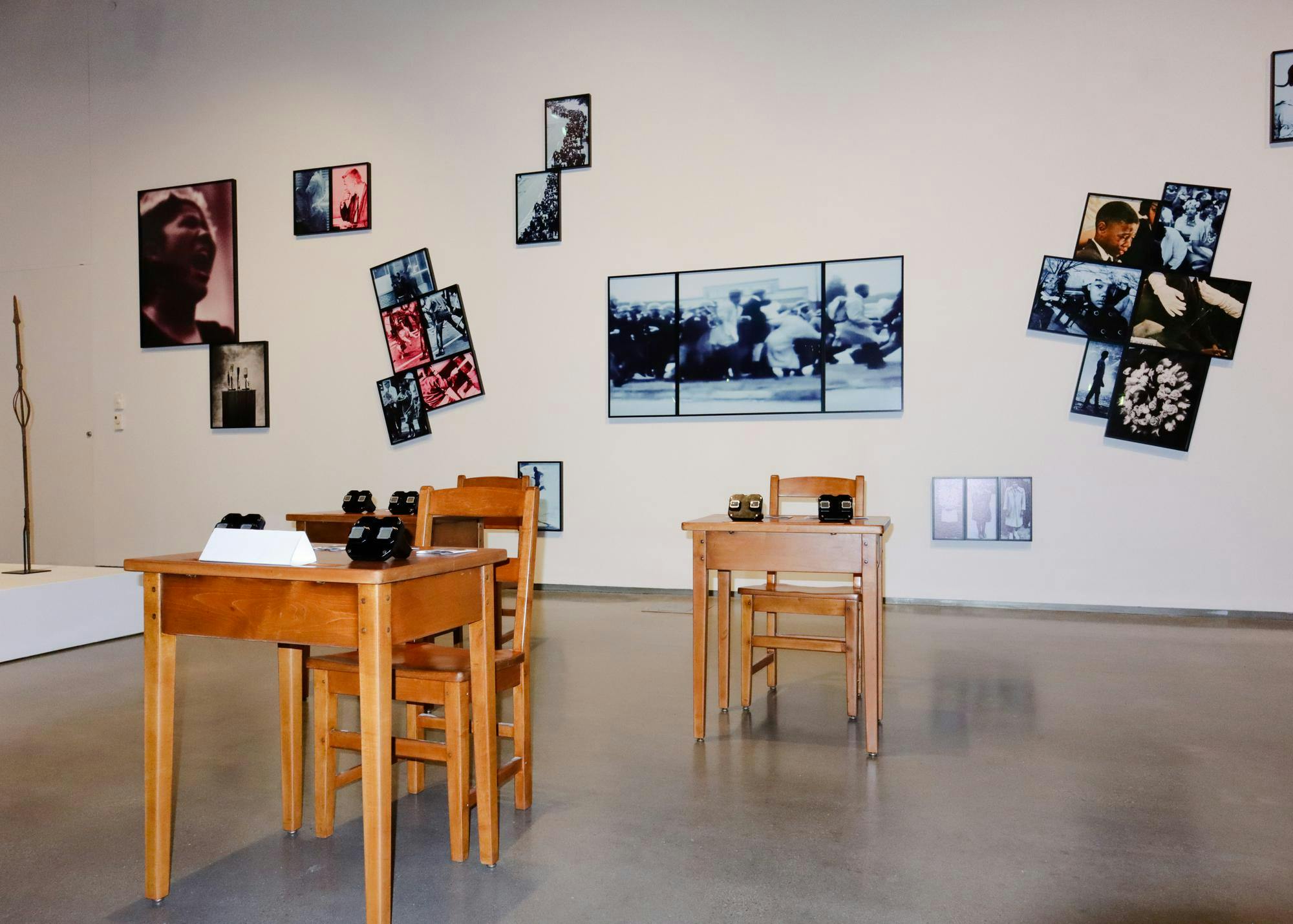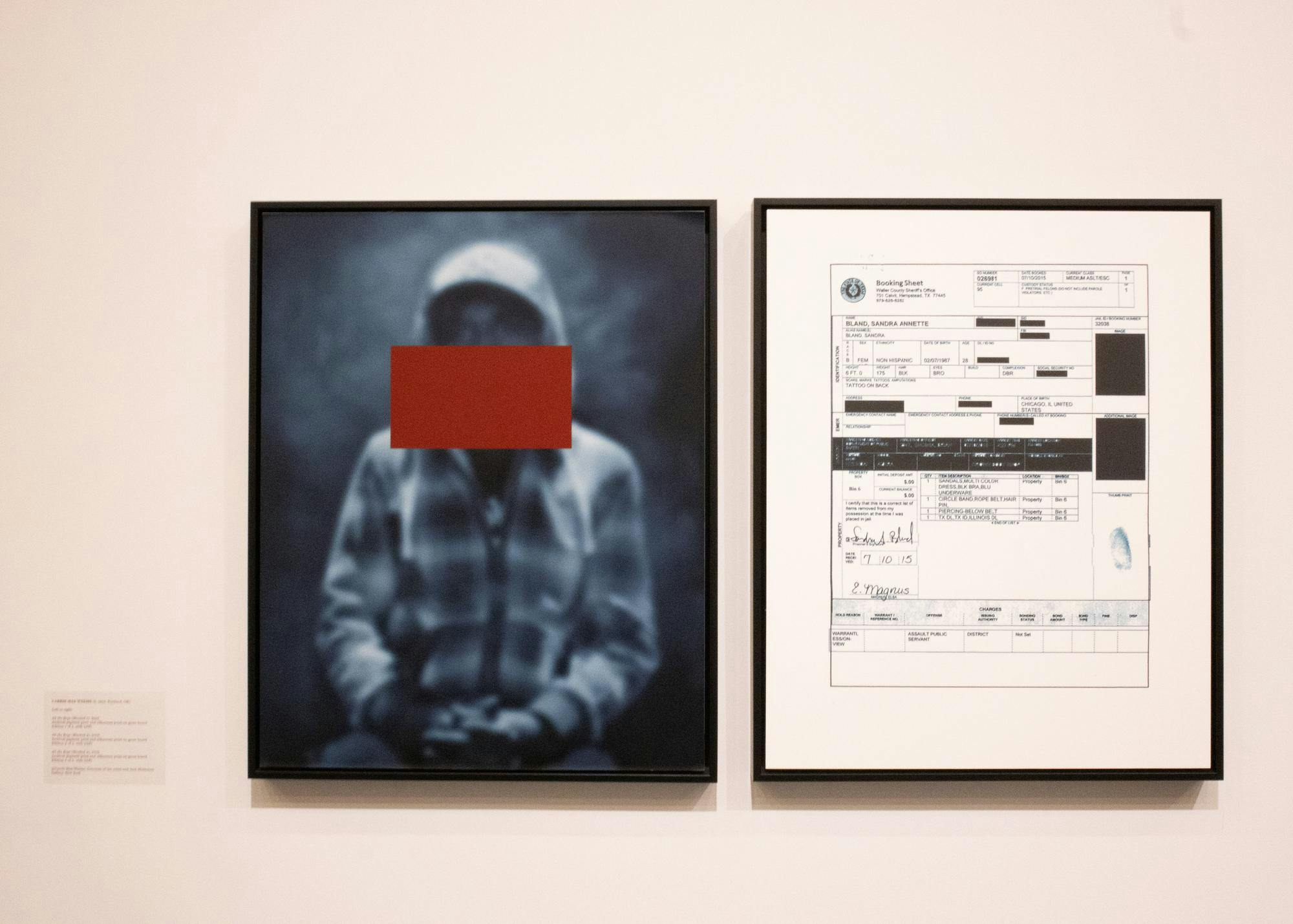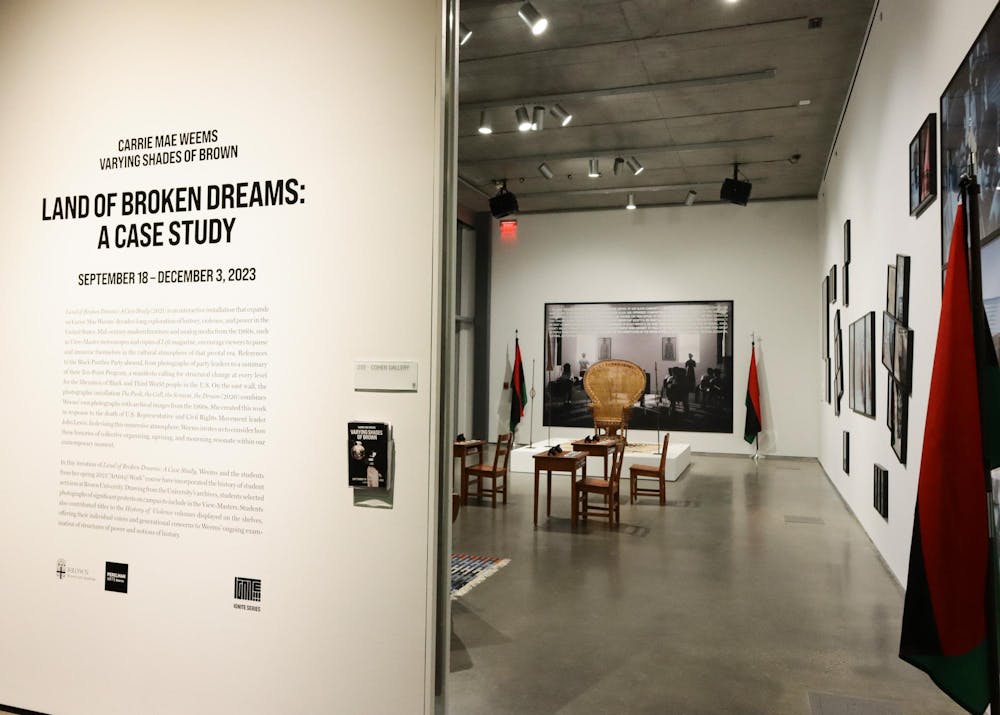On Sept. 18, the Brown Arts Institute introduced New York-based artist Carrie Mae Weems’s exhibit “Varying Shades of Brown,” on display until Dec. 3. Through the campus-wide exhibit, Weems aims to shed light on the cyclical nature of racial and sexual violence in America.
The exhibition is comprised of five distinct installations housed in various buildings across campus. Three of the exhibitions — “Land of Broken Dreams: A Case Study,” “Usual Suspects” and “Lincoln, Lonnie and Me — A Story in Five Parts” — opened to the public Sept. 18 and are housed in the Granoff Center’s Cohen Gallery, the List Art Center Lobby and the Bell Gallery, respectively.

The accompanying installations — “Seat or Stand and Speak” and “Cyclorama: The Shape of Things, A Video in 7 Parts” — will be housed in the Lindemann Performing Arts Center and open to the public Nov. 9. The appearance of Weems’s work marks the Lindemann’s inaugural exhibit, which will follow the center’s formal opening later this month.
“Carrie’s work, over the last three to four decades, has been an iterative process,” said Avery Willis Hoffman, artistic director of the Brown Arts Institute and professor of the practice of arts and classics. “She keeps returning to certain themes, like the legacy of slavery, the racial tensions in America and the history of violence.”
“She thinks about these topics deeply and expresses them, then she thinks about them again and expresses them in a new way,” Hoffman added. “That iterative process is the way history is. History repeats itself, there’s cycles of history.”
“Varying Shades of Brown” arrives at the tail end of Weems’s tenure as a visiting professor at University.
“One of the first things (BAI) did was invite (Weems) to be the inaugural Agnes Gund Professor of the Practice of Arts and Social Justice at the Brown Arts Institute,” Hoffman said.
This past spring, Weems and Hoffman taught the course ARTS 1910A: “Artist@Work: Carrie Mae Weems,” which invited students to think about the significance of Weems’s work being displayed at Brown.
“The students in that class worked closely with Carrie and myself to conceptualize what it would mean to have her work on campus. What you see now is a beautiful culmination of that work in class,” Hoffman said. “We set about on this idea of the campus as a canvas, which I think is a really wonderful way to think about bringing artists to our communities.”
The expansive exhibition invites visitors to interact with the installations — or, in Weems’s lexicon, to “activate” them.

“The word activation is a way to expand beyond the idea of an exhibit,” said Sofía Retta, a curatorial assistant for BAI. “When we think of an exhibition, we tend to think of something more static, maybe, but activation opens it up to invite people to participate in a different way.”
“These are not static art pieces that you come to observe and then walk away from,” Hoffman added. “We invite you to animate the space, make the space alive and interrogate the works’ themes.”
The installations’ unveiling culminates Nov. 10 with “Convening,” a two-day event held at the Lindemann in which artists, thinkers and students will engage in a variety of conversations about Weems’s work and its thematic focus.
“The convening speaks to the collaborative thread of her practice,” Retta said. “She has a lot of artists and writers who she’s collaborated with many times and it's proven to be a through point of her practice.”
“Weems likes to bring in a lot of thought leaders, people that she knows and other artists who can come and have a multi-day discussion,” said Peter Chenot, BAI’s director of marketing and communications. “It's a wonderful way for thoughts to become expressed and build upon each other.”
“What’s really meaningful about doing this at Brown is that we can, unlike a museum, bring resources to the project that invite the community to really respond,” Hoffman said.
“Varying Shades of Brown” invites gallery visitors to engage with Weems’s work on an intimate scale, meditating on questions of history, violence and representation in the process, Hoffman added.
“Her work continually provokes us to think about what our place in history is,” she said. “How can we learn from what has come in the past, and apply that to our thinking and actions today?”
Weems was unable to respond to a request for comment by press time.





